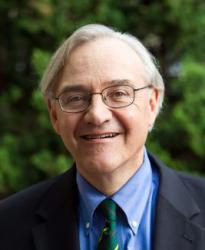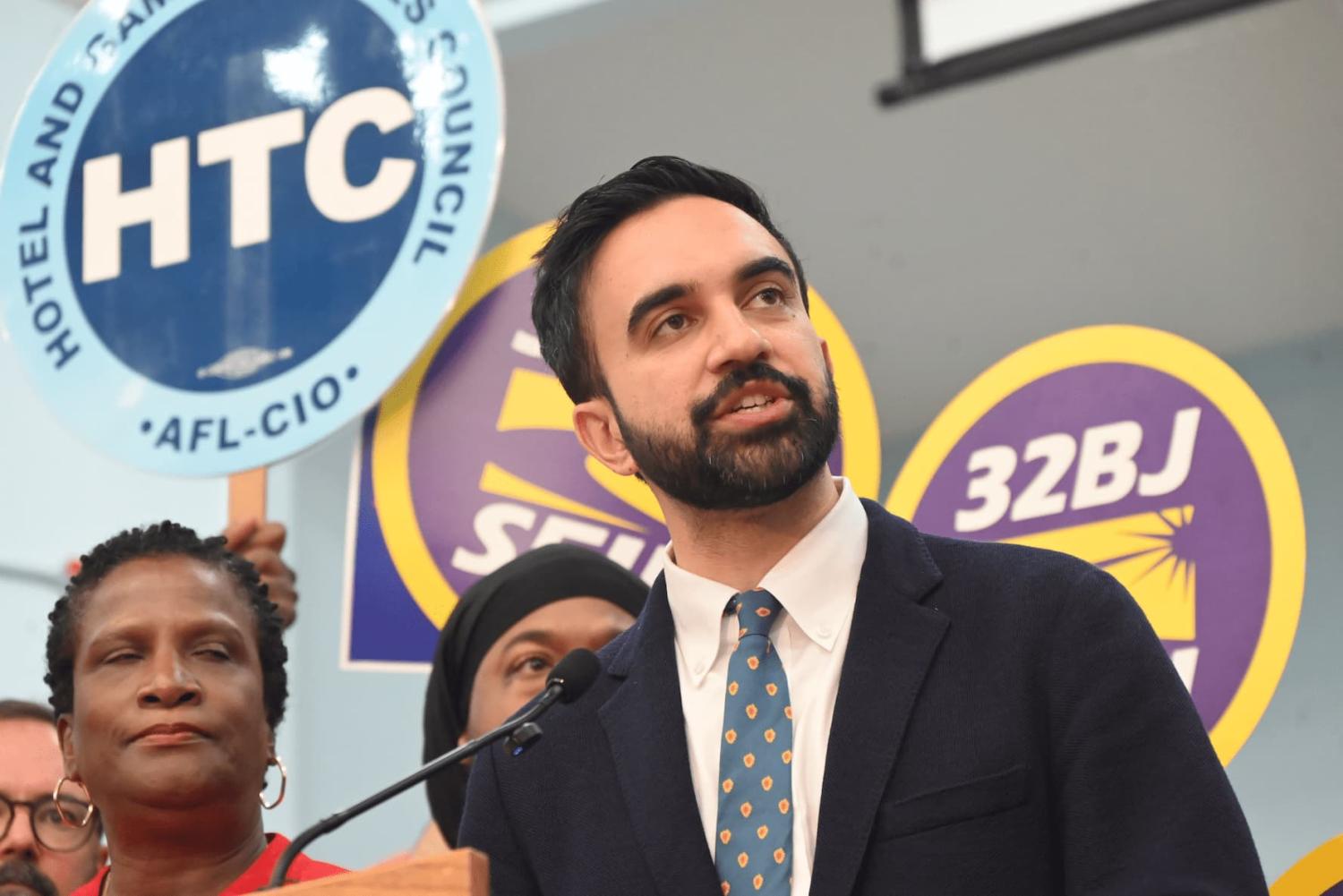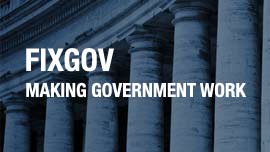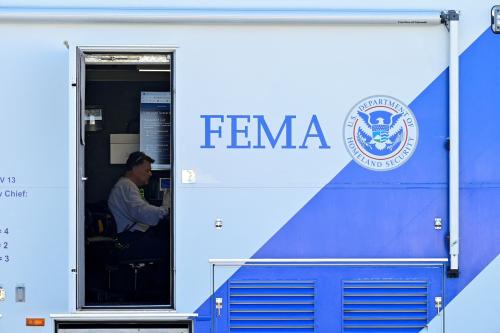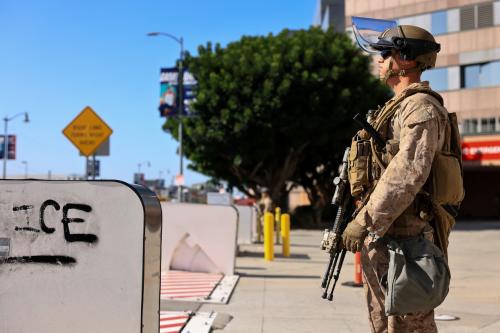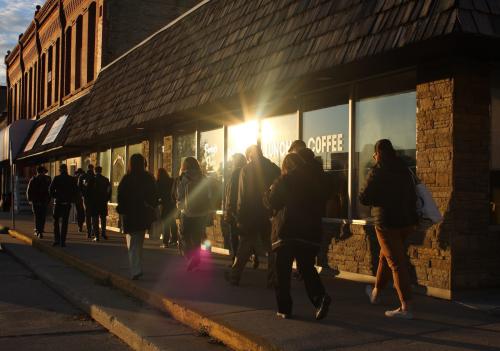“If I can make it there, I’ll make it anywhere.” Frank Sinatra’s buoyant declaration in his classic “New York, New York” may apply to many fields. It has limited application to national politics, particularly to those who rise to become mayor of New York City.
Not one person elected to what’s often called the second toughest job in America has ever even been nominated to run for president of the United States, although a number of its mayors over the last half century have tried. Their ranks include John V. Lindsay, Rudy Giuliani, and Michael Bloomberg.
This history is worth bearing in mind in the face of the outpouring of excitement and joy, worry and, in some quarters, panic over New York’s June 24th Democratic Primary. Overreading the importance of what happens in New York City elections is a long-standing habit rooted in the fascination the city’s politics inspires and the coverage its role as a media center guarantees.
None of this, however, diminishes the significance of 33-year-old state Assemblyman Zohran Mamdani’s thumping of 67-year-old former Governor Andrew Cuomo. Mamdani’s victory is both extraordinary and instructive enough without any hype. He is decidedly a generational talent, a term used regularly since his victory, not just by passionate advocates but also by hardened political warhorses taken by surprise when he won.
Because something genuinely new happened in this contest, it deserves close study for the post-2024 lessons it offers beyond New York’s five boroughs. How did Mamdani do it? What challenges does he face? What does his victory teach politicians elsewhere? And what does it tell us about future elections, this fall and well beyond?
To say that Mamdani came from nowhere is no exaggeration. As Emma G. Fitzsimmons, Alex Lemonides, and Irineo Cabreros wrote in the New York Times, Mamdani presided over “something the city had not really seen before: a winning citywide campaign for mayor, built from nothing in a matter of months.”
A three-term member of the state legislature from Queens, Mamdani was initially seen as a protest candidate with little chance of victory. An Emerson College poll in early February showed Cuomo leading the field with 33%. Incumbent Mayor Eric Adams ran second at 10%. At one time, it was assumed Adams would seek re-election through the Democratic primary; he has since decided to run in November as a third-party candidate. Mamdani came in at 1%. He lagged behind six other candidates, all in single digits, including former City Comptroller Scott Stringer and the well-respected incumbent Comptroller Brad Lander.
But even at 1%, Mamdani started with two major assets: skilled organizing and social media mastery.
Democratic Socialists of America (DSA), of which he’s a member, claims roughly 8,000 members in New York City and has proven its capacity to win City Council, state legislative races—and, most prominently, the congressional seat of Alexandria Ocasio-Cortez, who broke through in 2018 by defeating a respected Democratic incumbent (and House Democratic Caucus Chair) Joe Crowley.
DSA’s membership is a small number in a city of over 8 million people, but—in an era when membership of traditional political organizations has been on the decline—a significant base for seeding organizational efforts. Mamdani turned his initial cadre into a mass movement extending well beyond DSA, eventually encompassing what the campaign estimated to be roughly 30,000 doorknockers.
Mamdani also learned a lesson taught by the 2024 campaign: It matters who votes and who doesn’t. A recent Pew Research Center study drew attention to the fact that “a larger share of those who did not turn out in 2020—but did in 2024—supported Trump (54%) than Harris (42%).” If turnout matters in a general election, it matters even more in lower-turnout primaries.
Mamdani clearly changed the nature of the electorate in 2025. He focused on registering new voters, and the New York Times noted that in “the 14 days leading up to the registration deadline for the Democratic primary, about 37,000 people registered to vote, compared with about 3,000 people in the same period in 2021.” He also counted on getting younger voters to the polls, and he achieved this, too. The Times noted that while the number of voters over 60 years old was roughly the same between 2021 and 2025 primaries, the number of voters under 40 soared, with particularly large spikes among voters under 35 years old.
The organizing was fueled by Mamdani’s second major asset: his exceptional mastery of social media. Perhaps the highest compliment to his skills as a communicator came in the form of jeering from an opponent. During a debate, State Sen. Jessica Ramos said she had come to regret that she had not run for Mayor four years earlier. “I had been in the Senate for two years,” she said. “I’d already passed over a dozen bills. I thought I needed more experience. But it turns out that you just need to make good videos.”
Of course, “make good videos” understates the political importance of mastering new media. It’s now a cliché of history that Franklin Roosevelt’s early understanding of radio and John F. Kennedy’s grasp of television were essential to their success. Mamdani was a breakthrough figure in social media video. As the New York Times’s Ezra Klein observed in a conversation with MSNBC’s Chris Hayes, the author of an important book on the attention economy:
He’s the first politician I’ve seen who feels truly native to social media. There are a lot of politicians—Donald Trump and Bernie Sanders, for instance—who were dominant on Twitter and Facebook, mostly during the text-based, high-engagement, social-sharing era of media. And the thing that’s come after it—TikTok, Instagram, you see it more now on X—is much more algorithmic, and it’s much easier to come out of nowhere using visual, vertical video that isn’t primarily text-based. Zohran wasn’t dominant through text posts on X—it was videos and visuals. The graphic design in that campaign was beautiful—the colors, the whole thing.
But what Mamdani was communicating, about himself and the issues facing the city, also mattered. Some of his early videos were about his conversations with Trump voters. “We have to listen more and lecture less,” Mamdani told New York magazine’s David Freedlander, good advice to all politicians—and all progressives. What he learned is how big a role the cost of living played in their decisions to support Trump.
Like all good politicians, Mamdani went on to cast his program in terms of the central issue on voters’ minds. His key campaign pledges were all in some way connected to costs: freezing the rent for those in rent-stabilized apartments, making bus travel “fast and free,” a pilot program of city-run grocery stores, one in each of the city’s five boroughs, and free childcare for all pre-school kids. He also called for tripling the number of affordable housing units in the city and proposed making the City University of New York tuition-free, as it once was.
To pay for his program, he proposed raising the city’s corporate tax rate to 11.5% from the current 9% and instituting a 2% surtax on incomes of over $1 million.
What Mamdani showed (as Bernie Sanders had before him with promises of free college and single-payer health care) is that specific, memorable offers to voters are sticky in their memories in the way that more elaborate policy promises (or longer lists of proposals) are not. This is true even of proposals that arouse controversy. The controversy itself can become a form of attention-getting. (When Mamdani campaigned, he could say the words “Freeze the…” and his crowds would shout back “Rent!”)
Also significant: Mamdani understood in a way Cuomo did not that the dominant issue in voters’ minds had changed. Cuomo put far heavier stress on fighting crime, the issue that helped Eric Adams win in 2021. Four years later, the cost of living, not crime, was the voting motivator.
Often underrated in campaigns is the power of a candidate who seems happy in his or her work and enjoys connecting with voters. This skill has nothing to do with ideology. It was an asset for earlier generations of politicians, too, including moderate Democrats such as Bill Clinton and former Pennsylvania Governor Ed Rendell, and Republican George W. Bush. Politicians who convey a sense of hope—think FDR, Ronald Reagan, and Barack Obama—can similarly reach voters who may or may not agree with them on everything. Mamdani presented as a happy and hopeful warrior. Perhaps the first pundits to predict the kind of politician Mamdani would become were those at his middle school who, according to the Wall Street Journal, recognized him for having the “biggest smile.”
Three other factors were key: his age, his newness, and his opponent. All worked together.
Frustration in the Democratic Party over the advanced age of so many of its leaders has only grown since former President Joe Biden dropped out of the 2024 race after a disastrous debate performance widely attributed to his advanced age. Mamdani was half the age of his major opponent.
The 2024 defeat and a longing to turn history’s page, in turn, bred an interest in novelty. Mamdani’s message to the national party, wrote Benjamin Wallace-Wells in the New Yorker, was: “Be new.” Democrats, Wallace-Wells added, are tired of a party that had operated “from the top down and the inside out.” Cuomo’s high-powered endorsements from establishment politicians, including Bloomberg and Clinton, and the vast sums spent on Cuomo’s behalf by wealthy New Yorkers had the ironic and unintended effect of reinforcing this narrative.
Cuomo’s weaknesses were key to Mamdani’s triumph. Although Cuomo led in the polls throughout the campaign, the single most important fact about his standing is that he barely added any votes to those he had at the outset. Note that Cuomo received 33% support in the Emerson College poll in February, which showed Mamdani with just 1%. On primary day, Cuomo won 36.5% of the first preference votes, to 43.5% for Mamdani and 11.2% for City Comptroller Lander. The remaining 8% was scattered among six other candidates.
The anti-Cuomo character of the outcome was underscored on July 1 when the city released the redistribution of second and subsequent preferences of voters who initially picked Lander or one of the other also-rans. Mamdani gained 12.4% to reach 56%. Cuomo picked up just 7.5% to finish at 44%.
It turned out that many voters had not forgotten about Cuomo’s resignation as governor amidst a sexual harassment scandal and did not view him as at all apologetic about what happened. Deaths in nursing homes because of his pandemic policies bothered some voters, while Cuomo’s distant style of campaigning—he greatly limited his public events and access to the media and voters—contrasted sharply with Mamdani’s everywhere, all at once approach.
Cuomo’s expectation, shared by many political seers, was that he could win by turning the race into a straight choice between himself and Mamdani, with Mamdani cast as a radical who was dangerous to the city. This had the reverse effect: It made Mamdani the predominant anti-Cuomo choice. Lander fell by the wayside and ran third but made himself an important player late in the campaign by cross-endorsing with Mamdani, a move encouraged by rank-choice voting. He directed his fire at Cuomo and his voters’ second and subsequent preferences to Mamdani.
The contrast between the spirit of the two campaigns mattered. CNN quoted a Cuomo campaign adviser: “He wasn’t all of a sudden going to be warm and friendly. And his operation wasn’t all of a sudden going to be warm and friendly.” Ezra Klein observed tellingly in The Times: “Mamdani always seemed much more motivated by his sympathies than his resentments. And Cuomo felt to me much more motivated by his resentments than his sympathies.” The candidates thus reversed a common stereotype: Mamdani was a happy populist, Cuomo an angry establishment candidate.
The assumption that the Democratic primary settles New York City elections, given the party’s overwhelming dominance, has suffered many blows over the last three decades. Republicans held the New York City mayoralty for 20 years between 1993 and 2013. Republican Rudy Giuliani won in 1993 and 1997, while the nominally Republican Bloomberg prevailed in 2001, 2005, and 2009.
Could a Republican win again? Curtis Sliwa, the red beret-wearing Republican nominee best-known as a talk show host and the leader of the Guardian Angels anti-crime group, is given little chance, and there is already pressure on him to drop out from business leaders and others who fear a Mamdani mayoralty. Their hope is that Mayor Adams, who is already on the fall ballot as a third-party candidate, might also be given the Republican line. Sliwa is so far refusing their entreaties. Cuomo, who also has a position on the fall ballot, has not yet decided if he will actively campaign going forward. His poor showing in the primary will be discouraging, as will the prospect of splitting the anti-Mamdani vote with Adams.
Mamdani is now, unexpectedly, the front-runner, not only as the Democratic nominee who has earned momentum and respect but also because of the weakness of his potential foes. He quickly rallied support from many of the unions that had supported Cuomo and began to assemble support from Democratic officeholders who had opposed him or stayed neutral in the primaries.
Adams, who formally kicked off his independent re-election campaign two days after the Democratic primary, remains unpopular with his approval rating hovering around 20%. But he sees potential in an anti-Mamdani effort even more aggressive than Cuomo’s already sharp-edged campaign. He wasted no time in attacking Mamdani’s left wing views (“This is not a city of socialism,” Adams says), expressing skepticism about Mamdani’s promises (“There’s no dignity in someone giving you everything for free”) and contrasting his opponent’s upscale background as the son of a professor and a filmmaker with his own (“This election is a choice between a candidate with a blue collar and one with a suit and silver spoon.”).
Now that he has a strong chance of becoming mayor, Mamdani will be called upon to defend the specifics of his program in a way he was not in the primary. His government-owned grocery store plan is small and experimental, but he will face critics such as columnist Matt Yglesias, who will argue that there is no need for it. Free bus service is by no means a radical idea—suburban Montgomery County, Maryland, outside of Washington, recently initiated it—but it has costs and skeptics.
The rent freeze has been tried before. It will not produce the new apartments he has promised, and as opponents of rent control always argue, could discourage new private investment in housing. (Mamdani has acknowledged that the freeze without new production will not solve New York’s housing problem and has of late spoken of the importance of private sector building.)
His free childcare plan is popular, given the need for an affordable option for working families. But it’s also expensive, as are other parts of his program, which means Mamdani really will need the new tax revenue he has promised—and he can only get it if the state legislature and the governor agree. His fellow Democrat, Governor Kathy Hochul, is up for re-election in 2026 and has said she opposes his tax increases. The “what will Albany do?” question would become a live problem for him only after he was elected, but opposition among Democrats to his tax ideas—and arguments that they would drive business from the city—will certainly be a test for his campaign. Hochul has been slow to endorse Mamdani, as have other prominent Democrats in the state and city.
The issue that has absolutely nothing to do with New York City government but always matters in New York City is the Middle East. Mamdani would become the city’s first Muslim mayor, and he has been highly critical of Israel. He has called Israel’s actions in Gaza a “genocide.” He supports the BDS (boycott, divestment, sanctions) movement, which calls on investors, including universities and pension funds, to cut financial ties with Israel.
He has come under criticism for refusing to condemn the expression “globalize the intifada.” On Meet the Press on June 29, he said, “That’s not language that I use,” and that “it’s language I understand there are concerns about.” He added that he preferred to stress that “freedom and justice and safety are things that, to have meaning, have to be applied to all people, and that includes Israelis and Palestinians as well.”
But when pressed, he said he did not want to “start to walk down the line of language and making clear what language I believe is permissible or impermissible.”
At the same time, Mamdani has repeatedly denounced anti-semitism, referred to the Oct. 7 attack on Israel as a “horrific war crime,” and speaks frequently of conversations with Jewish New Yorkers who felt under threat.
“We’re seeing a crisis of anti-semitism,” he said during a joint appearance with Lander on Stephen Colbert’s Late Show. He pledged “to increase funding for anti-hate crime programming by 800% because… anti-semitism is not simply something that we should talk about. It’s something that we have to tackle. We have to make clear there’s no room for it in this city, in this country, in this world.”
Republicans have made clear that such subtleties will not enter into their calculations. They hope to capitalize on what they will cast as Mamdani’s radicalism and try to tie him to other Democrats. Even before the primary, President Trump called Mamdani “a total nut job,” and “a pure, true communist.”
Rep. Elise Stefanik, who has aspirations to run against Hochul next year, told CNN that Mamdani would be “the single most effective foil for Republicans nationally.” She added: “It is the encapsulation of where today’s Democratic Party is, how far left they have shifted and how radicalized they have become.”
Rep. Mike Lawler, who is also pondering a race against Hochul, went even further. “A radical, anti-semitic socialist was just nominated to be the Democratic candidate for mayor of New York City—and Kathy Hochul didn’t lift a finger to stop it from happening,” Lawler said.
Some Republicans went straight to shameful Islamophobia. Rep. Andrew Ogles (R-Tennessee) referred to Mamdani as “little Muhammad” and wrote on social media this week that he “needs to be DEPORTED.” Rep. Marjorie Taylor Greene (R-Georgia) posted an image of the Statue of Liberty clothed in a burqa with the message, “This hits hard.” Rep. Nancy Mace (R-South Carolina) shared a photo of Mamdani and wrote, “After 9/11, we said, ‘Never Forget.’ I think we sadly have forgotten.” Stefanik called Mamdani an “antisemitic, jihadist, Communist candidate.”
Such attacks brought even Democrats who had opposed Mamdani to defend him vigorously. New York Rep. Ritchie Torres, a moderate, pro-Israel Democrat who had strongly supported Cuomo and sharply criticized Mamdani for refusing to condemn the “globalize the intifada” phrase, was representative of the broad response. “Whether you agree with his politics or not,” Torres said, “every member of the Democratic Party has an obligation to speak out forcefully and with moral clarity against Islamophobia.”
The fascination with Mamdani will continue between now and November, and long after if he wins. But the New York City contest is but one of the three major battles this fall. Governorships are at stake in New Jersey and Virginia. Three special House elections will take place between September and November. There is also a long list of other Mayoral elections, including those in Albany, N.Y., Albuquerque, Boston, Birmingham, Ala., Buffalo, N.Y., Charlotte, Cleveland, Detroit, Miami, Minneapolis, New Orleans, and St. Paul, Minn.
This year’s Democratic gubernatorial candidates—Representative Mikie Sherill in New Jersey and former Representative Abigail Spanberger in Virginia—are respected figures from the moderate wing of the party with strong backgrounds in national security as well as domestic policy. For at least the duration of the 2025 election cycle, they will join Mamdani in becoming national faces of the party. Their Republican opponents, former state Assemblyman Jack Ciattarelli in Virginia and Lt. Gov. Winsome Earl-Sears in Virginia, are both supporters of President Trump. As a result, these contests will take on a character far more similar to the 2026 midterms than the New York contest has or will.
The progressive wing of the Democratic Party certainly has reason to celebrate Mamdani’s victory. If he becomes mayor, he will join New York Representative Alexandria Ocasio-Cortez, who strongly supported his candidacy, as a powerful and charismatic voice for progressive Democrats around the country. But it would be a mistake to read the New York result as reflecting a broad national trend in favor of progressives over center-left or moderate candidates.
As my Brookings colleague Elaine Kamarck and Anna Heetderks of the University of Virginia showed in their comprehensive study of the 2024 congressional primaries, moderate and center-left candidates they labeled mainstream Democrats substantially outperformed progressives nationwide: The mainstream Democrats won 67% of the primary contests, the progressive Democrats 30%. Of the six explicitly Democratic Socialist candidates, three of them won their contests—they constituted 1% of primary winners—and three lost. The two parties are asymmetrically polarized: Right-wing Republicans did far better in their primaries than left-wing Democrats did in theirs.
What Mamdani did show is that an explicitly Democratic Socialist candidate can connect with a broader electorate by fashioning a program designed to speak directly to voter concerns, especially when its specific proposals—free buses and childcare, rent freezes—are both understandable and popular. Mamdani also understood what successful, more middle-of-the-road Democrats did in 2024: That the cost of living is now a driving public concern and that candidates who speak to it have a better chance of winning.
Writing in the Washington Post, Paul Kane noted that Sen. Jackie Rosen of Nevada won re-election in a state Vice President Kamala Harris lost “by embracing an aggressive approach to fighting inflation while positioning herself as an authentic voice, someone who didn’t run her first political campaign until her late 50s.”
Sen. Elissa Slotkin of Michigan is another moderate Democrat who won in a state Harris lost. Speaking on June 26 at the Center for American Progress, Slotkin said that “people, just like in November, are still really focused on costs and the economy and their kitchen-table math—and they’re looking for a new generation of leadership.” She said of Mamdani: “We may disagree on some key issues, but understanding that people are concerned about their family budget—that is a unifying thing for our coalition.”
And across partisan and ideological lines, politicians will try to learn from Mamdani about how to communicate in an era when traditional television ads continue to lose influence to social media video and when campaigns need to activate new voters, not assume that turnout is broadly the same from election to election. And yes—it helps to be young, to be energetic, to hope, and to smile.
The Brookings Institution is committed to quality, independence, and impact.
We are supported by a diverse array of funders. In line with our values and policies, each Brookings publication represents the sole views of its author(s).
